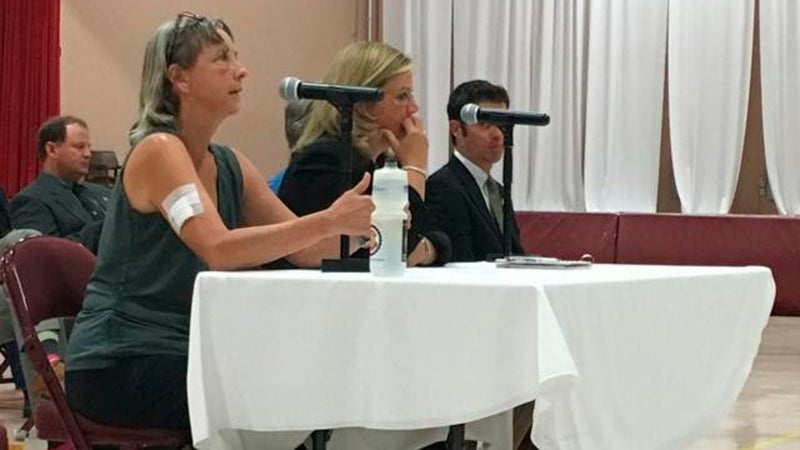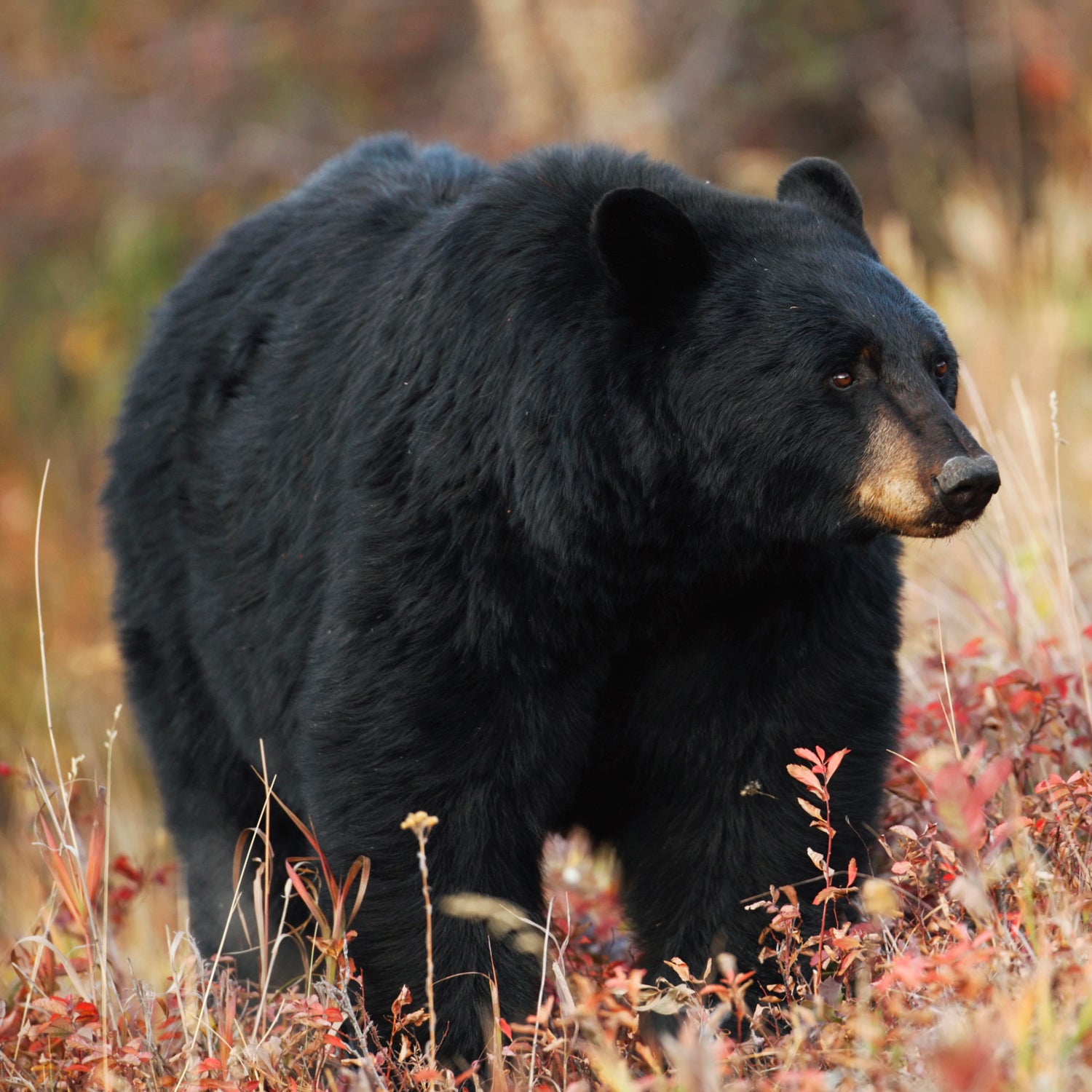At first the black bear was just a blur in her peripheral vision. Karen Williams, an ultrarunner and trauma nurse, was rounding a bend near the finish line of a backcountry marathon in the mountains of northern New Mexico when the animal burst from a wooded riverbank. As it surged towards her on that hot summer day in 2016, she stopped and screamed. In a matter of seconds, she was overtaken.
The bear tackled Williams to the ground while its cubs scattered. It sank its canines into Williams’ arms and smacked her across the skull. “I had this split-second thought that I was going to die,” Williams says. “Then I stopped thinking that, and started trying to figure out how to survive.”
With the bear mauling her, Williams had the presence of mind to roll on her side and lay still and silent. “When [the bear] left, I tried to get up but I was too nauseous and dizzy because of the head wound,” she says. “Then I waited ten minutes and I started calling for help.”
Half an hour later, two fellow runners found Williams near the side of the trail, very bloody, with her back against a tree. She was rushed to a nearby hospital, where doctors bandaged her wounds and performed a full skin graft on her badly lacerated eyebrow. A day later, after returning to her Los Alamos��home, she learned that the bear was already dead. . The two cubs, meanwhile, were captured and temporarily put in��a veterinarian's care.
“We are going into their habitat. We have a responsibility to protect ourselves.”
Williams, for her part, was deeply disappointed by the outcome. Despite her brutal encounter, she did not believe the bear deserved to die—it was only protecting its offspring, after all. So she decided to try to change the way that New Mexico handles human-wildlife conflict. Her effort is in line with a broader push to find new ways for people and animals to peacefully coexist in the open spaces of the American West.��
Advocates and officials in the 11 western states, with their still-wild landscapes and rising human populations, are increasingly eager to establish new and between people and large carnivores. Such encounters, says Bryan Bird, the southwest program director at the conservation non-profit , “are going to become more and more of a problem because people are recreating outdoors more than ever before.” When Bird moved to New Mexico in the 1990s, “you didn't really see so many trail running events or backcountry skiing. Even mountain biking wasn't nearly as big,” he says. “Now, it's off the charts.”��

Scott Talbott, the chair of the ' human-wildlife conflict committee, agrees. Though there isn't a comprehensive source for information about violent encounters between animals and people, he says such encounters are “absolutely” on the rise, especially in places where dense cities abut wild landscapes.
For this reason, he adds, there's been a “huge upswing” in efforts to teach people . Defenders of Wildlife, for example, is trying to encourage organizers of trail running marathons and similar wild-land sporting events across the West to refrain from scheduling their gatherings during the springtime emergence of mother bears and cubs from hibernation. It also encourages other preventative measures, such as carrying bear spray when running in the backcountry and putting small bells on mountain bikes. “We are going into their habitat,” Bird says. “And we have a responsibility to protect ourselves.”
But with outdoor recreation on the rise across the country, and continued growth in backcountry recreation in particular, . Bird, Williams, and others wonder: when wild animal attacks do occur, what's the best way for government officials to respond?
Some states, like Montana, have a flexible approach to the problem. When an attack takes place there, Montana Fish, Wildlife, and Parks sends out its Wildlife Human Attack Response Team to investigate the situation and determine the best way forward. In a tragic 2016 case, for instance, a on a backcountry trail and was immediately killed by the frightened animal. A taskforce of biologists and wildlife wardens decided that the bear had acted naturally and in self-defense and the search for the offending griz was eventually called off.
Other states use more rigid methods—New Mexico is one of them. A state regulation first promulgated in the 1970s mandates that any animal that bites a human must be killed, beheaded, and its brain tested for rabies.��There are no exceptions, even for species like black bears that have an extremely low incidence of the infectious disease. The state's Department of Health says that “laws and regulations around animal bites of humans in��New��Mexico��are critical to our efforts to keep��New��Mexicans healthy��and safe.” (The state Department of Game and Fish was not available to comment for this article.)
Williams disagrees with the state's hardline rule. And so, before her wounds had even healed, she launched her effort to change it. She did some research, recruited scientists, reached out to political representatives, and, just this year, she and her allies . The bill revokes the lethal response rule and mandates a more nuanced approach to the problem. State officials will be permitted to kill an animal, using their professional discretion, if it has acted in a predatory or unprovoked manner, is identified as a “rabies reservoir” species like skunks, fox and raccoons, or has exhibited symptoms of rabies, among other conditions.
“The propensity for bears to carry rabies is very low, and particularly for a female raising her cubs out in the middle of nowhere,” says Diana Doan-Crider, a bear biology expert at Texas A&M University who has helped advise Williams. Nevertheless, due the New Mexico rule, state officials didn't have discretion. They had to kill the mother bear that bit Williams.
In early February, a state legislative committee held an initial vote on Williams' proposal. To her disappointment, it was a tie, and the bill is temporarily shelved. But the ultrarunner believes she will eventually prevail and help set a different course for the way humans deal with wild animal attacks in the state.
“That is the thing with ultra athletes,” she says. “We don't really give up, even when it hurts.”��


